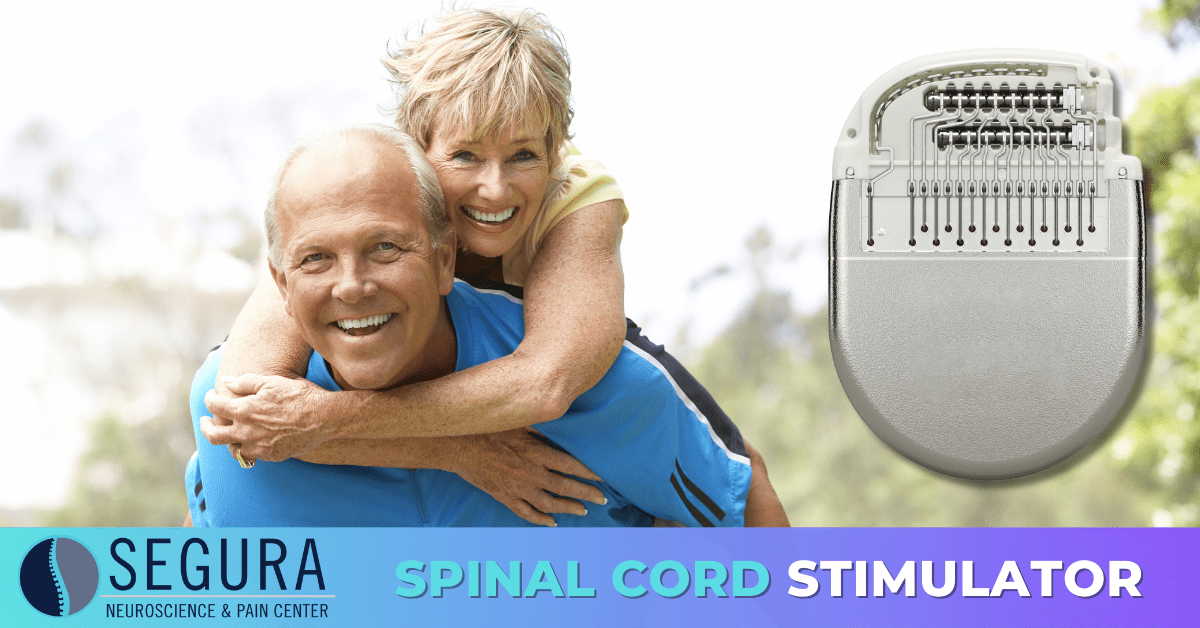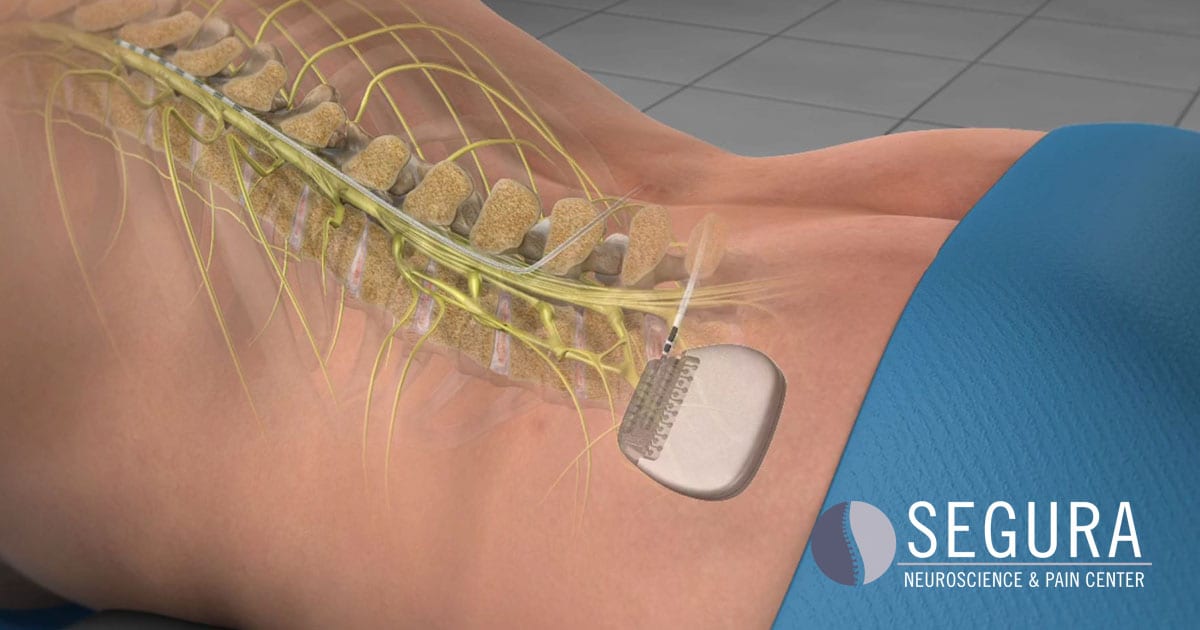
Components of a Spinal Cord Stimulator
Who Can Benefit from an SCS Implant?
Candidates for SCS include people who suffer from neuropathic pain which has not responded to more conservative treatments. Before being considered for spinal cord stimulation, the patient should meet the following qualifications:
Once determined a candidate for SCS, the physician may choose to first test the device for a trial period. The trial device can help the physician determine if the SCS successfully relieves the patient’s pain.
Conditions Treated with SCS
What Does the Procedure Entail?
The patient is laid stomach-down and lightly sedated. With the aid of a real-time x-ray (fluoroscopy), one or more insulated wire leads are guided through an epidural needle, or a small incision, and into the epidural space - the area surrounding the spinal cord. The electrodes at the end of the lead deliver electrical pulses, which the nerves in the specified areas of the spinal cord. The patient will give feedback to allow the physician to place the stimulators in a position which best blocks the pain.
The leads are first connected to an external control to determine if the spinal cord stimulator effectively blocks the patient’s pain. If successful, the SCS device can be permanently implanted beneath the skin, either in the upper buttock or abdomen.
The implant is programmed, and can be modified, using an external, wireless remote control. The patient then has the freedom to turn the system off and on, adjust the intensity of the impulses, and switch between different pre-programmed settings.
Recovery and Aftercare
Advancements in Spinal Cord Stimulation
A Smarter Way to Manage Chronic Pain
For individuals living with chronic pain, even small improvements can be life-changing. Recent advancements in spinal cord stimulation technology are helping patients achieve better, more consistent results.
While traditional SCS systems have offered relief, they sometimes posed challenges—such as inconsistent effectiveness, difficult adjustments, and frequent in-office visits.
Enhanced Features of Modern SCS Systems
Next-generation spinal cord stimulators now include innovative features designed to improve patient experience and outcomes:
- Daily remote monitoring that transmits therapy data for expert review.
- Real-time support that can identify and address issues proactively—often before the patient notices a problem.
- Remote adjustments, reducing the need for in-person appointments.
- Full-body MRI compatibility with fewer restrictions, offering greater freedom for future medical imaging.
Proven Benefits from Clinical Research
Clinical studies have shown that patients using these advanced SCS systems experienced:
- Significant pain reduction, with a majority reporting at least 50% less pain.
- Improved sleep quality and increased daily activity.
- Decreased reliance on opioid medications.
- Fewer in-person visits, with remote monitoring allowing faster issue resolution.
Continuous Support Beyond the Procedure
Unlike older systems, modern SCS devices often include ongoing support programs, ensuring that therapy stays optimized long after implantation. This continuous oversight helps maintain pain relief and device performance, giving patients added peace of mind.

